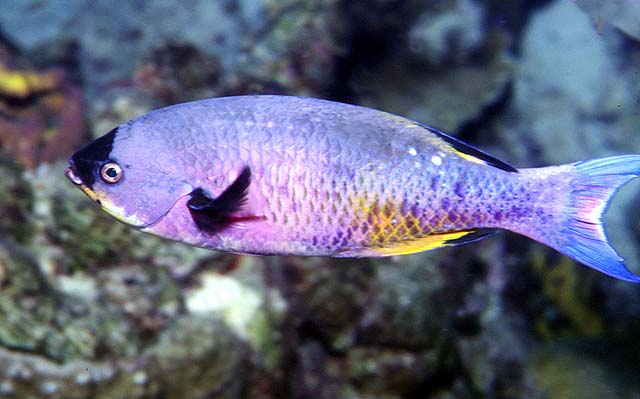| Labridae (Wrasses) |
| 30 cm TL (male/unsexed); max.weight: 320.0 g |
|
reef-associated; marine; depth range 8 - 100 m, |
| Western Atlantic: Bermuda, southern Florida (USA), and Bahamas to northern South America. |
|
Dorsal spines (total): 12-12; Dorsal soft rays (total): 10-10; Anal spines: 3-3; Anal soft rays: 12-13. Moderately elongate, compressed fish with equally curved upper and lower profiles (Ref. 26938). Color primarily violet or purple; large individuals with a wash of yellow on lower two-thirds of body; prolonged portions of dorsal and anal fins and tips of pelvic fins blackish (Ref. 13442). Caudal fin emarginate in young, lunate in adults (Ref 52831). |
| Inhabits seaward reef slopes; occasionally on shallow patch reefs (Ref. 9710). Found in large midwater aggregations feeding on plankton (Ref. 9710), small jellyfishes, pteropods, pelagic tunicates and various invertebrate larvae (Ref. 13442). Form leks during breeding (Ref. 55367). Also caught with beach nets (Ref. 5217). |
|
Least Concern (LC); Date assessed: 25 March 2009 Ref. (130435)
|
| harmless |
|
Source and more info: www.fishbase.org. For personal, classroom, and other internal use only. Not for publication.

